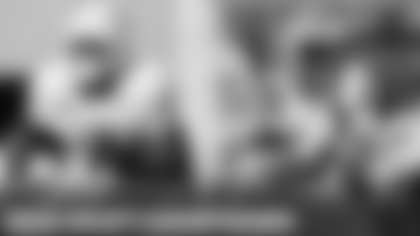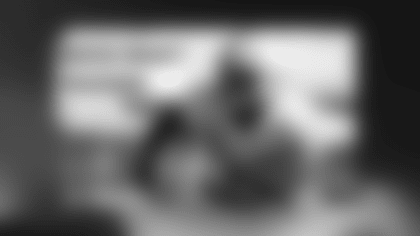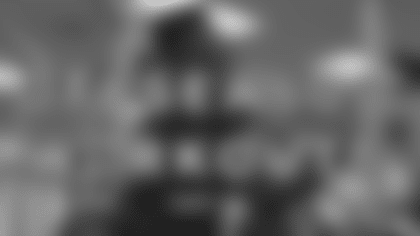A wide receiver who spent nine seasons [1982-90] with New England, you lined up alongside two other talented receivers in Stanley Morgan and Irving Fryar. Since the game's played with only one ball, how'd you make your mark?
"Coming out of college [Duke] I was a speed receiver. I ran a 4.42 [40]. But Stanley and Irving were much faster, more elusive, so I became a 4.4 possession receiver. [Laughs] I made my craft in not putting the ball on the carpet and I could play all four wide receiver positions. I learned the entire offense so I found a place to play."
It couldn't have hurt to have Hall of Fame receiver Raymond Berry as your head coach [1984-89].
"It did not. And not only did I have Stanley Morgan, who was a perennial Pro Bowl candidate, Harold Jackson, who played with the Rams and was a great wide receiver in the league for numerous years, was my position coach. And then with Raymond Berry, I had a wealth of knowledge at wide receiver to learn from and to emulate.
"For a young boy to live out his dream of playing in the National Football League, it was tremendous for me. I loved every minute of it and loved to compete against the best athletes in the world. If you lead the league in passing, you're the best at what you do in the world. It's not like you're the best doctor or the best banker on Wall Street. That's an opinion. Someone writes that. You have the numbers to prove it in the National Football League. And when you're the best, you're the best."
And now for the past seven years, you've been the Director of Athletics at one of the best in the country – the New York Athletic Club.
"I'm responsible for overseeing 18 sports. Ten of the sports are Olympic sports and the other eight are club sports. So for athletes post-collegiately who move to New York and want to compete, say in lacrosse, they can become an athletic member at our club.
"I'm responsible for the budgets, the athletic facilities. We have a swimming pool we have a track, a boxing ring, a fencing room, a wrestling room, judo. Those are some of the sports that we have. So it keeps me busy and it's very comparable to being an A.D. at a college except for I don't have to fire any coaches and don't worry about kids getting drunk and shooting weapons off. Those type of things."
What's your goal?
"When I first came here my goal was to bring first-class programming to the club. Meaning our member services programs from fitness classes – we have about 40 classes that we offer weekly – to first-class facilities. We have a gymnasium that we've renovated, new flooring with a flotation floor, new lighting. We have a FieldTurf field that we've put in since I've been here.
"We've been voted the No. 1 club in the United States the last six years, so I try to bring in No. 1 programming and No. 1 facilities and have our members have a great healthy experience when they come in to work out."
What do you enjoy about coming to work every day?
"Interacting with athletes. When I worked at the (NFL) office in my last job, I was the director of youth football, so I oversaw youth football development internationally and domestically. I enjoyed doing that. The one thing is I was working with professional athletes and working with the teams. Here I'm working with athletes who are just as dedicated, but don't receive the publicity that professional athletes receive.
I work with rowers. I work with team handball players. I work with wrestlers, judo players who work at their craft just as pro football players or pro basketball players do. But they kind of toil in anonymity unless they've won an Olympic medal. So having a chance to help these young athletes reach their goals, whether it's to become a national champion or a Pan-Am champion or an Olympic champion, it is very rewarding."
This article originally appeared on the NFL Player Engagement website.



























